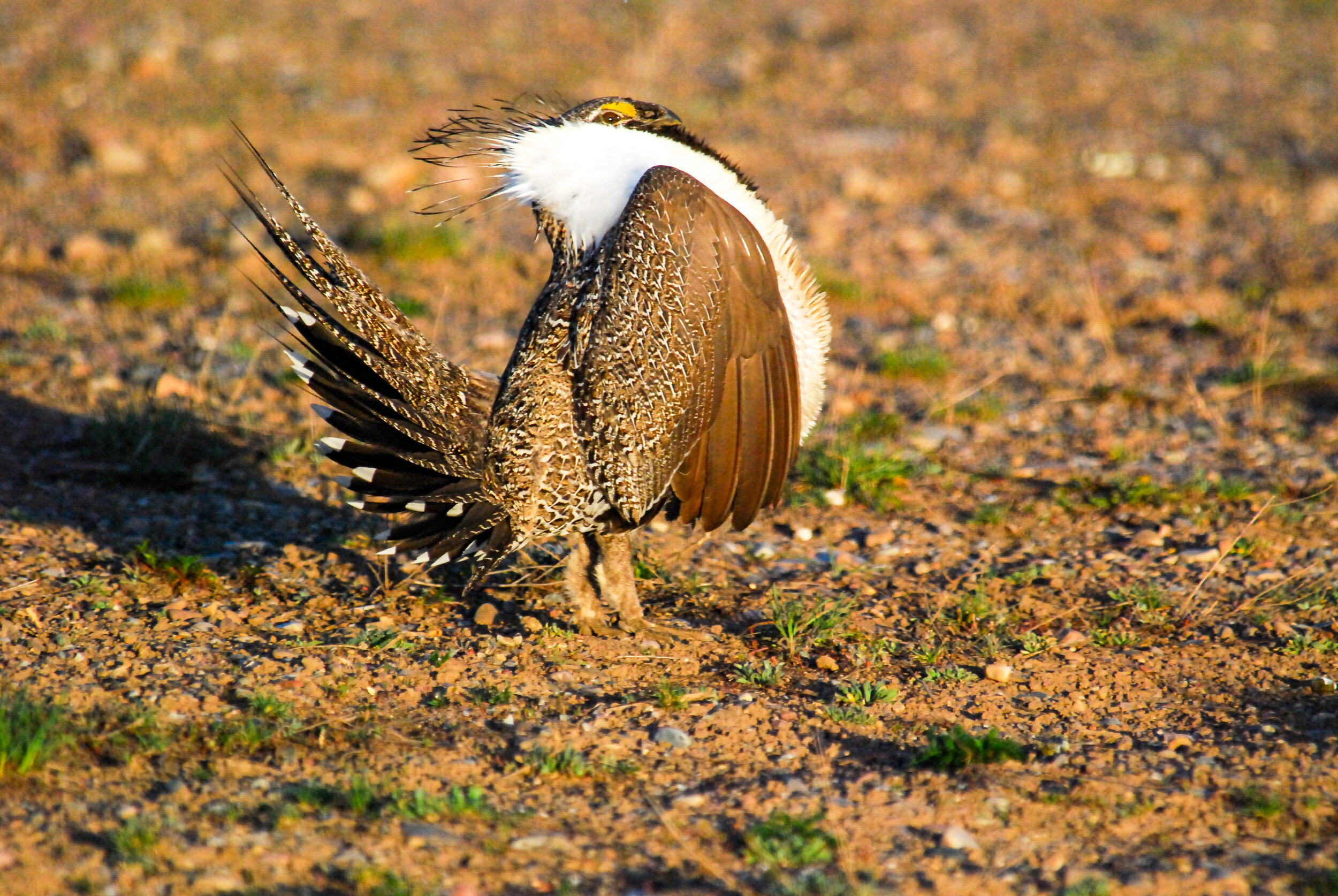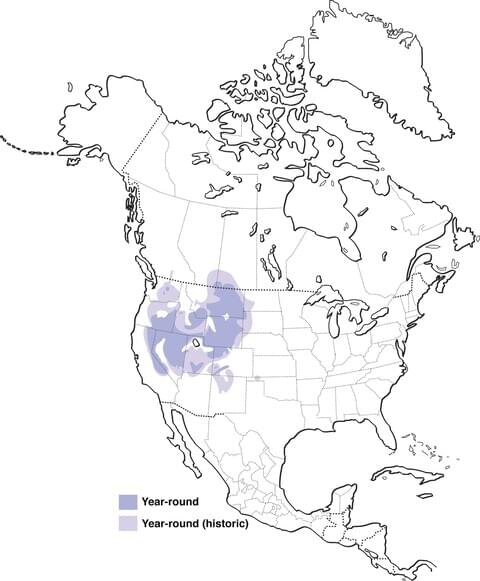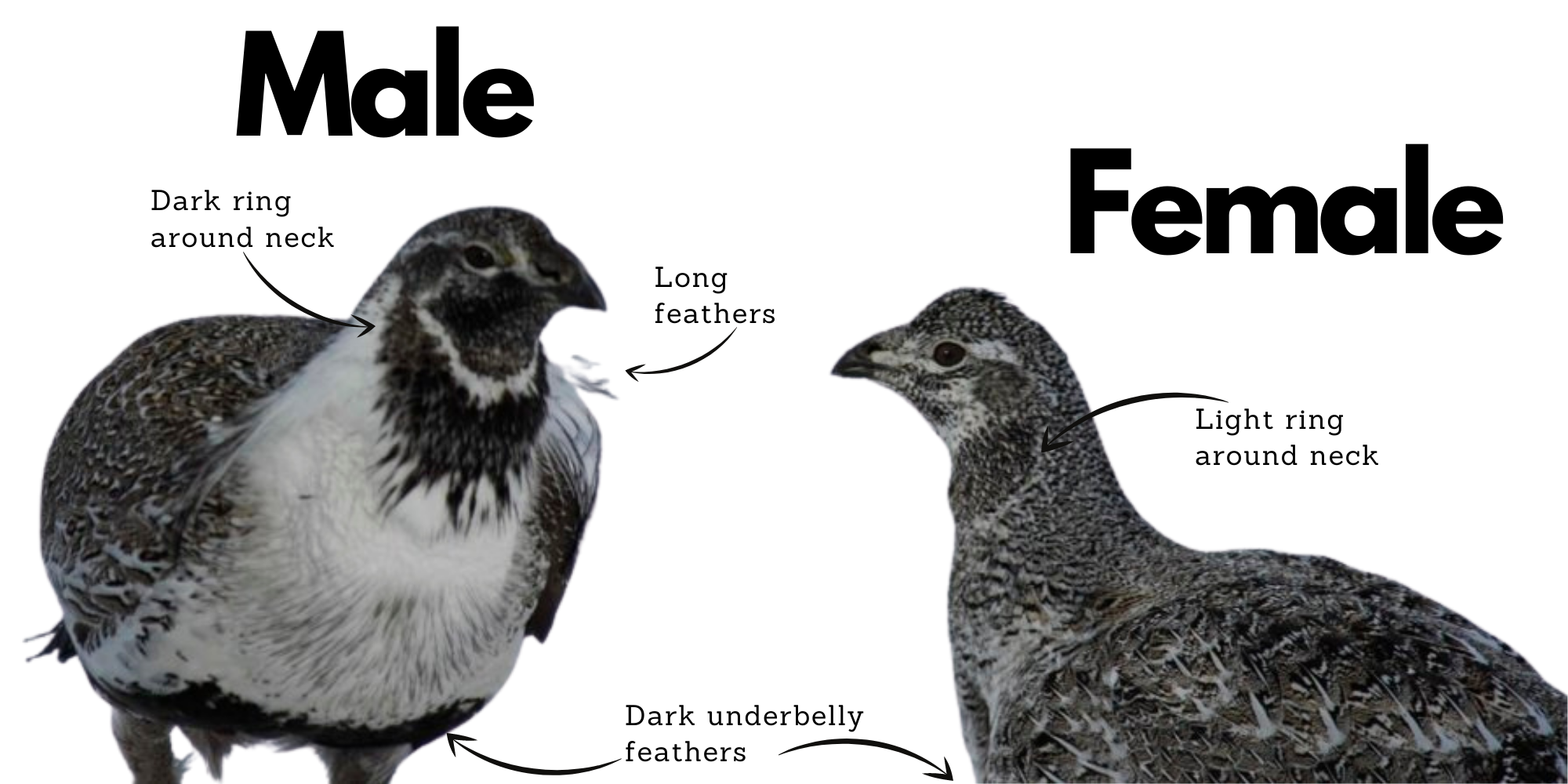
Greater Sage-Grouse Lesson
Alright, let’s kick this lesson off with some dancing!
What do you think these birds are up to?
a. Searching for bugs in the grass
b. Stomping angrily after a fight
c. An elaborate mating ritual
And, drum roll, the correct answer is….
C.
If you answered that this crazy looking dance is an elaborate mating ritual, you would be right! They strut around their mating territory, known as a “lek”, expanding their spiky tails and inflating their throat sacs. Sometimes these males will hit each other with their wings, trying to attract a hen.
Each year, sage grouse return to the same breeding grounds to begin this dance, making this an incredible annual event.
Where do they live?
Sage grouse can be found throughout parts of California, Nevada, Utah, Colorado, Wyoming, the Dakotas, Montana, Idaho, Oregon and Washington. They live in places with large amounts of sagebrush and large prairies. Sagebrush is important to grouse because they nest under the brush as well as have a diet largely of sagebrush.
These birds used to live in Nebraska, Kansas, Oklahoma, New Mexico, Arizona, as well as British Colombia and Saskatchewan. However, due to the loss of their habitat, sage grouse have disappeared from these areas.
Sage-Grouse range map.
- Birds of the World
Sage Brush Ecosystem
As you can see from the picture above, sagebrush is the life force of many animals. From bugs to rabbits, to grouse, sagebrush is a primary food source. These animals then serve as prey to hawks, coyotes, and more.
Click the audio below to hear a sage grouse
Male sage grouse make a soft wut sound when they are trying to warn other grouse while females make a variety of calls including a contact call, a warning call, and a distraction or confrontation hiss. When males are strutting for females in their mating ritual on the lek, they have a specific sequence of sounds. They make three wing shushes a second apart and low coos and pops (what you hear in the video!). Then after the wing sounds he pushes the air from his inflated esophageal sac, making a burp-sound.
Let’s hear your best grouse sounds!
Male v. Female
Telling the difference between a male and female sage grouse can sometime be difficult. Males are typically a bit larger and have longer tail feathers than females. A full grown tail feather might measure 5-7/8 inches length while a the females’ tend to be less than 5-1/2 inches. However, sometimes hens can have long tail feathers! So how can you tell then? Well, usually female sage grouse will have light-grey feathers around their neck while males have a darker “collar”. Males also have thin feathers at their neck that stick out in longer whips. Both male and female grouse have dark underbelly feathers, but sometimes the male’s is more defined. Still can’t tell? A final idea is to look at the feathers above their tail feathers. Do you see 2 or three white spots? Then the bird is probably a male!
Decline in Populations
A recent study by the U.S. Geological Survey (USGS) found greater sage-grouse populations have been in a steep decline. Over the last sixty years, USGS saw an 80% decline with 40% of this decline taking place since 2002. With this dramatic decline, the greater sage-grouse is at risk of extinction.
Greater sage-grouse populations are a signifier of the overall health of the sagebrush ecosystems. However, Recent years have shown an increased population decline in western portions of the greater sage-grouse range, highlighted in the Great Basin. Eastern areas have seen a less dramatic decline and Western Wyoming stood out as the only region with stable populations. Unfortunately, the population as a whole is now less than a quarter of its numbers half a century ago.
Reasons for population declines include:
The oil and gas industry’s effect on sage-grouse habitat
Farmland expansion
Wildfires
There are now around 200,000 sage-grouse in the American West where there once were millions. Activists and policy-makers are working to list the greater sage-grouse as endangered which would protect their habitat from drilling, mining and grazing.
Conservation Plans
The Bureau of Land Management, a government agency in charge of federal lands, re-started efforts to conserve sagebrush ecosystems in August 2021. Part of their plan is to stop mining in areas with sagebrush. They are also trying to protect the sagebrush ecosystem across the west from human activity.
Many states also have implemented their own plans to protect sagebrush ecosystems and sage grouse along with them. However, more needs to be done to ensure these important animals are protected.
So what can you do?
When you talk to your friends, parents, and siblings about sage grouse, you bring awareness to the issue!
Watch ‘Sage Grouse in the Spotlight’!
Have a minute? Check out our team looking for sage grouse featured in a film by Assignment Earth.
Ready to test your knowledge? Take the Sage Grouse Quiz!
Resources:
Sibley, David Allen. (2003). The Sibley Field Guide to Birds of Western North America. Andrew Stewart Publishing, Inc.




